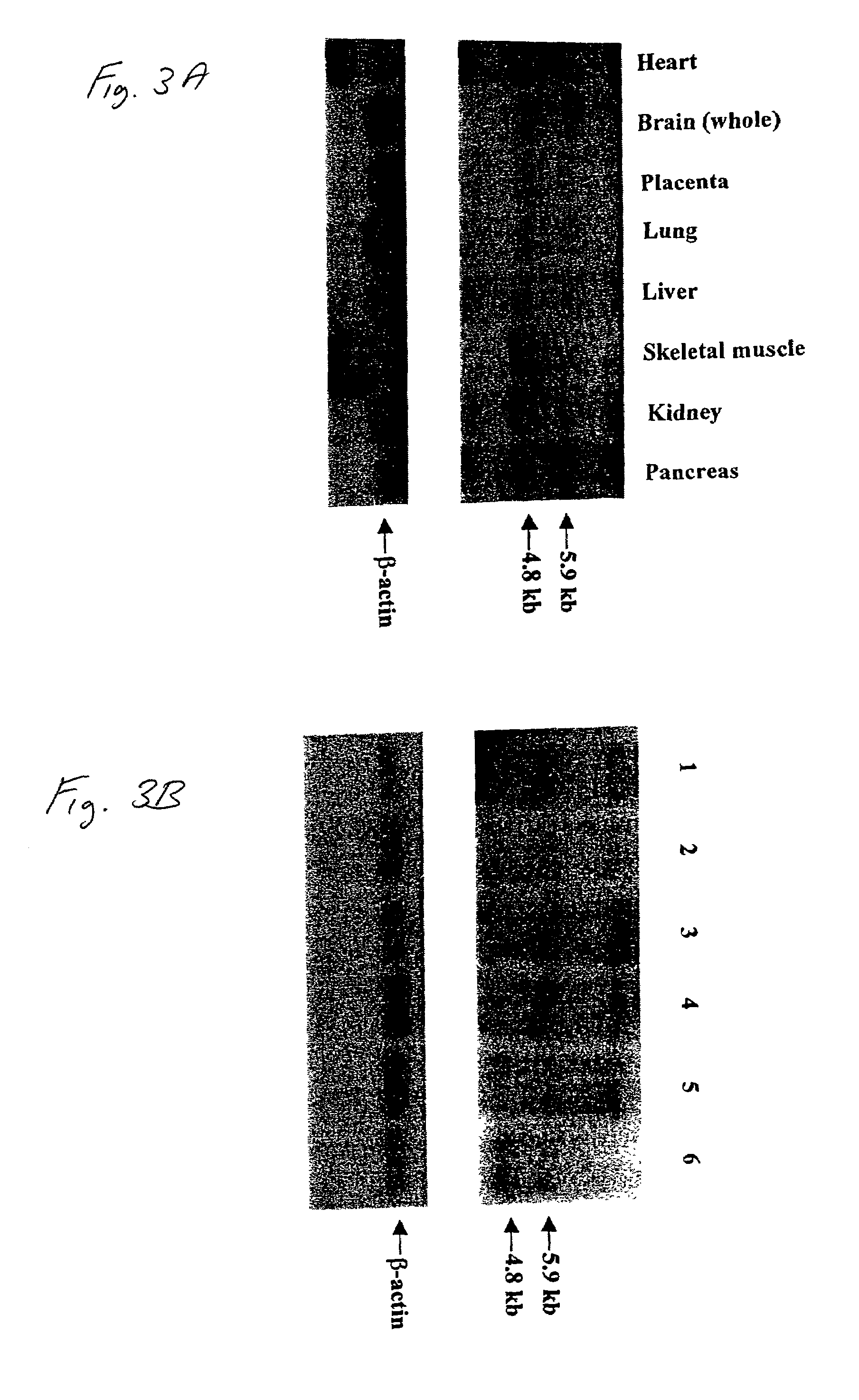Gene for identifying individuals with familial dysautonomia
a gene and family technology, applied in the field of gene for identifying individuals with familial dysautonomia, can solve the problems of poor development, survival, progressive degeneration of sensory neurons, and disorder that is inevitably fatal, and achieves grossly reduced drg
- Summary
- Abstract
- Description
- Claims
- Application Information
AI Technical Summary
Benefits of technology
Problems solved by technology
Method used
Image
Examples
example 1
[0105]Identification of the IKBKAP gene and the mutations associated with FD were obtained as follows:
Patient Samples
[0106]Blood samples were collected from two major sources, the Dysautonomia Diagnostic and Treatment Center at New York University Medical Center and the Israeli Center for Familial Dysautonomia at Hadassah University Hospital, with approval from the institutional review boards at these institutions, Massachusetts General Hospital and Harvard Medical School. Either F. A. or C. M. diagnosed all patients using established criteria. Epstein Barr virus transformed lymphoblast lines using standard conditions. Fibroblast cell lines were obtained from the Coriell Cell Repositories, Camden, N.J. RNA isolated from post-mortem FD brain was obtained from the Dysautonomia Diagnostic and Treatment Center at NYU. Genomic DNA, total RNA, and mRNA were prepared using commercial kits (Invitrogen and Molecular Research Center, Inc.). Cytoplasmic protein was extracted from lymphoblasts ...
example 2
FD Diagnostic Assays
[0118]As discussed above, the allele-specific oligonucleotide (ASO) hybridization assay is highly effective for detecting single nucleotide changes in DNA and RNA, such as the T-C or G-C mutations or sequence variations, especially when used in conjunction with allele-specific PCR amplification. Thus, in accordance with the present invention, there is provided an assay kit to detect mutations in the FD gene through use of a PCR / ASO hybridization assay.
PCR Amplification
[0119]Genomic DNA samples are placed into a reaction vessel(s) with appropriate primers, nucleotides, buffers, and salts and subjected to PCR amplification.
[0120]Suitable genomic DNA-containing samples from patients can be readily obtained and the DNA extracted therefrom using conventional techniques. For example, DNA can be isolated and prepared in accordance with the method described in Dracopoli, N. et al. eds. Current Protocols in Human Genetics pp. 7.1.1-7.1.7 (J. Wiley & Sons, New York (1994))...
example 3
FD Diagnostic: Other Nucleotide Based Assays
[0131]As will be appreciated, a variety of other nucleotide based detection techniques are available for the detection of mutations in samples of RNA or DNA from patients. See, for example, the section, above, entitled “Nucleic Acid Based Screening.” Any one or any combination of such techniques can be used in accordance with the invention for the design of a diagnostic device and method for the screening of samples of DNA or RNA for FD gene mutations in accordance with the invention, such as the mutations and sequence variants identified herein. Further, other techniques, currently available, or developed in the future, which allow for the specific detection of mutations and sequence variants in the FD gene are contemplated in accordance with the invention.
[0132]Through use of any such techniques, it will be appreciated that devices and methods can be readily developed by those of ordinary skill in art to rapidly and accurately screen for...
PUM
| Property | Measurement | Unit |
|---|---|---|
| size | aaaaa | aaaaa |
| nucleic acid sequences | aaaaa | aaaaa |
| nucleic acid | aaaaa | aaaaa |
Abstract
Description
Claims
Application Information
 Login to View More
Login to View More - R&D
- Intellectual Property
- Life Sciences
- Materials
- Tech Scout
- Unparalleled Data Quality
- Higher Quality Content
- 60% Fewer Hallucinations
Browse by: Latest US Patents, China's latest patents, Technical Efficacy Thesaurus, Application Domain, Technology Topic, Popular Technical Reports.
© 2025 PatSnap. All rights reserved.Legal|Privacy policy|Modern Slavery Act Transparency Statement|Sitemap|About US| Contact US: help@patsnap.com



